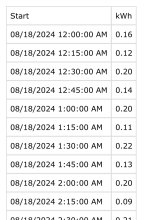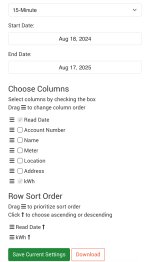I believe that the residential load calculations we perform are very bloated. Sometimes they can limit what we can install for the homeowner or cause them to spend unnecessary money on service upgrades or load management products. Instead of submitting load calculations with my electrical permit applications I would like to submit 1 year of the actual maximum demand data because I know that will be much lower and more accurate than the load calc.
My question is what the "maximum demand" is, exactly. Our area is served by a very large PoCo and is mostly smart meters now, so I assume that data will be available thru their website. But I am not sure exactly what form it needs to be in to tell me the average load in place of the VA number I get when doing a load calculation.



